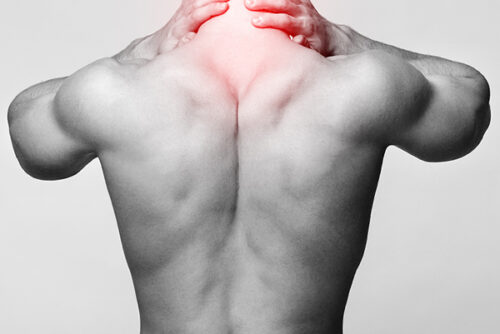
What is neuropathic pain?
Neuropathic pain is a term to describe pain that arises from abnormalities of the nerve. Trauma, compression, infections, medical diseases and stroke can damage nerves. Some examples of neuropathic pain include slipped discs with sciatica, shingles, trigeminal neuralgia and diabetes-related peripheral nerve pain.
What is the treatment for neuropathic pain?
Besides treating the underlying problem, neuropathic pain should be managed early and aggressively. Neuropathic pain responds poorly to common painkillers such as paracetamol and anti-inflammatory medications. Anti-depressants, anti-convulsants as well as opioids are frequently used. Severe cases of neuropathic pain will benefit from spinal cord stimulation.
What is spinal cord stimulation?
Spinal cord stimulation uses implanted electric wires (or leads) placed onto the spinal cord to block pain signals. A battery – known as an implantable pulse generator – generates tiny electric current to stimulate the spinal cord. When the stimulator is switched on, the painful part of the body is replaced with a comfortable tingling sensation.
For more information, see https://www.pain.com/en/chronic-pain-solutions/spinal-cord-stimulation.html
Diabetic Neuropathy
What is diabetic neuropathy?
Diabetic neuropathy is due to nerve damage from diabetes, especially poorly controlled diabetes with high blood sugar level. Nerves in the hands and feet are most commonly affected – a term called diabetic peripheral neuropathic pain (DPNP).
What are the symptoms of DPNP?
The hands and feet may experience sharp pricking pain, burning or cold sensation, numbness, tingling, hypersensitivity to touch or temperature changes. Symptoms may be worse at night. Walking barefooted, wearing socks or shoes may be unbearable.
How is DPNP treated?
Treatment is focused on relieving pain and slowing the progression of the disease through good blood sugar control.
Common pain medications do not work for neuropathic pain. Antidepressants,
anticonvulsants or even opioids are required.
Spinal cord stimulation is a possible treatment for DPNP that is severe and persistent.



![pain-conditions-back[1] pain-conditions-back[1]](https://thepainclinic.com.sg/wp-content/uploads/2022/11/pain-conditions-back1-500x334.jpg)
![pain-conditions-joint[1] pain-conditions-joint[1]](https://thepainclinic.com.sg/wp-content/uploads/2022/11/pain-conditions-joint1-500x334.jpg)
![pain-conditions-shingles[1] pain-conditions-shingles[1]](https://thepainclinic.com.sg/wp-content/uploads/2022/11/pain-conditions-shingles1-500x334.jpg)
![pain-conditions-trigeminal[1] pain-conditions-trigeminal[1]](https://thepainclinic.com.sg/wp-content/uploads/2022/11/pain-conditions-trigeminal1-500x334.jpg)
![pain-conditions-head[1] pain-conditions-head[1]](https://thepainclinic.com.sg/wp-content/uploads/2022/11/pain-conditions-head1-500x334.jpg)
![pain-conditions-myofascial[1] pain-conditions-myofascial[1]](https://thepainclinic.com.sg/wp-content/uploads/2022/11/pain-conditions-myofascial1-500x334.jpg)
![pain-conditions-fibromyalgia[1] pain-conditions-fibromyalgia[1]](https://thepainclinic.com.sg/wp-content/uploads/2022/11/pain-conditions-fibromyalgia1-500x334.jpg)
![pain-conditions-cancer[1] pain-conditions-cancer[1]](https://thepainclinic.com.sg/wp-content/uploads/2022/11/pain-conditions-cancer1-500x334.jpg)
